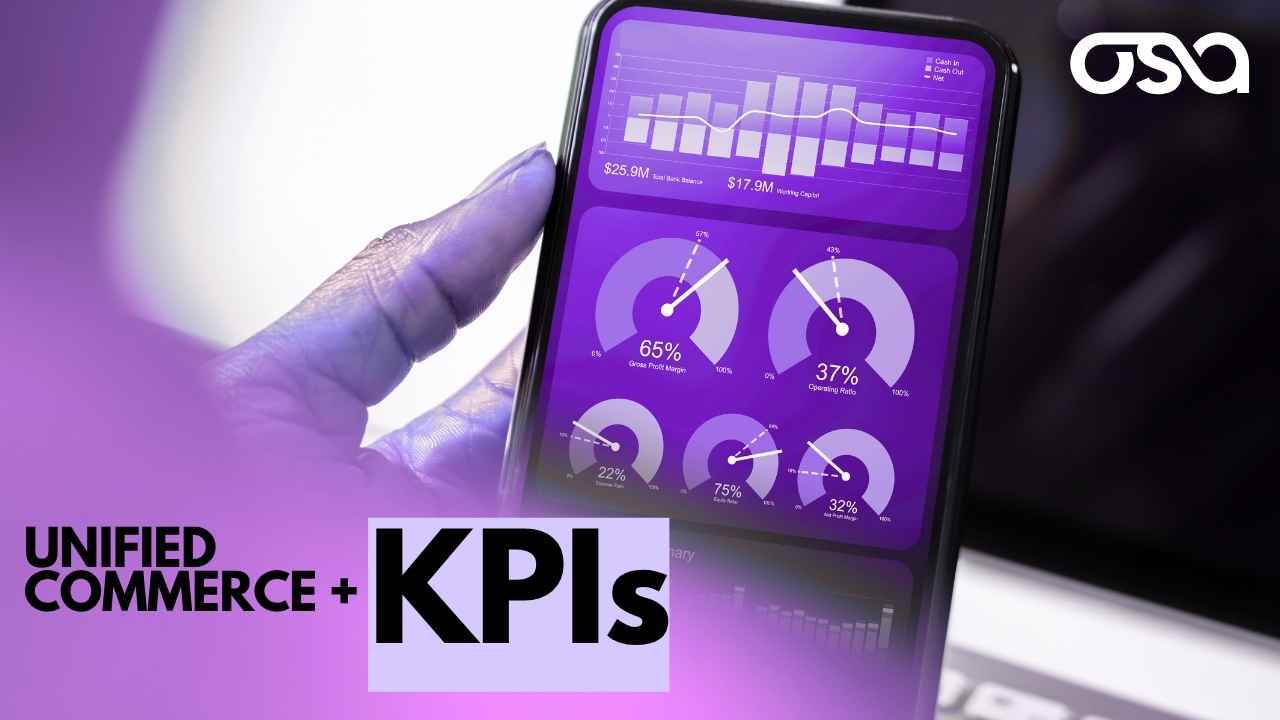What is a supply chain KPI?
A measurable metric that shows how well a supply chain is performing. These metrics track efficiency, highlight problem areas, and guide improvements across production, fulfillment, and delivery.
4 min read
![]() Osa Commerce
:
November 5, 2025
Osa Commerce
:
November 5, 2025

Discover the essential supply chain KPIs that drive operational excellence for manufacturers, brands, and 3PLs—and explore how unified commerce technology bridges the gap to real-time visibility, agility, and elevated customer satisfaction.
Supply chains are only as resilient and efficient as the data that flows through them. And what data matters most depends greatly on where your business sits within the supply chain — but all of it connects back to visibility, agility, and customer satisfaction.
Key Performance Indicators (KPIs) have evolved from simple metrics into strategic levers for supply chain optimization. Digitally connected environments between manufacturers, brands, and third-party logistics providers (3PLs) rely on KPIs to assess operational health, identify bottlenecks, and drive continuous improvement across the end-to-end supply chain.
Success in modern logistics requires not only measuring core metrics but also gaining actionable insights. When KPIs are tracked and leveraged effectively, businesses can receive early warnings for disruptions, enable proactive decision-making, and align cross-functional teams on performance objectives—ensuring the entire value chain moves as a cohesive, responsive unit.
A measurable metric that shows how well a supply chain is performing. These metrics track efficiency, highlight problem areas, and guide improvements across production, fulfillment, and delivery.
Tracking KPIs creates a single source of truth, helping to reduce blind spots, enable faster decisions, and build a stronger ecosystem across manufacturers, brands, and 3PLs, increasing value.
Supply chains are complex, interdependent networks. Without the right metrics in place, you're flying blind. With accurate KPIs, data chaos is under control, bringing clarity to what works well, how to spot risks early, and how to optimize outcomes.
The real value of KPIs in the supply chain lies in how they enable leaders to make data-driven decisions, rather than relying on guesswork and reaction. This is why they serve as the backbone of an efficient and resilient operation for manufacturers, brands/retailers, and 3PL providers. Whether it’s demand spikes, port delays, or supply shortages, companies with strong KPI visibility recover faster as they have a better foundation for a scalable, future-ready operation.
By tracking the right KPIs consistently, supply chain teams can identify trends and use insights to:

By consistently tracking the right KPIs, supply chain teams can identify trends and utilize valuable insights. Here are a few of the top KPIs by business:
Tracking the right KPIs like OEE, defect rate, or production lead time aren’t just about reporting metrics. They help smooth scheduling, cost savings, and better alignment to:
Indicates how efficiently inventory is sold and replaced.
Impact: High turnover suggests healthy sales and responsive restocking; low turnover ties up working capital and increases carrying costs.
Measures the percentage of customer orders fulfilled on the first shipment.
Impact: A low fill rate equals missed sales and damaged brand reputation.
The time from order placement to delivery.
Impact: In an era of “instant everything,” long cycle times kill repeat business.
Brands depend on KPIs like demand forecast accuracy, inventory turnover, and customer order cycle time to:
Tracks the reliability of delivery performance.
Impact: Poor OTD disrupts downstream sales, increases penalties, and erodes client trust.
3PLs are heavily focused on fulfillment KPIs — OTD (On-Time Delivery), dock-to-stock cycle time, and warehouse utilization. Data-driven 3PLs become trusted partners, not just service providers. Strong performance here means:
Visibility remains the cornerstone of supply chain excellence, yet traditional systems often create silos that fragment data and impede collaboration. Unified commerce technology, such as the Osa Unified Commerce Platform, breaks down these silos through cloud-based API-first integration, real-time data flow, and enterprise-wide connectivity.
By aggregating data from warehouse management systems (WMS), order management systems (OMS), enterprise resource planning systems (ERP), and fulfillment platforms, unified commerce solutions provide stakeholders with a single, unified source of truth. This holistic view enables manufacturers to tie production data to real-world demand, brands to monitor inventory and sales in real time, and 3PLs to track shipments and manage capacity more effectively—all while maintaining robust data privacy and security standards.
Unified Commerce Platforms, with cloud integration management, like Osa Zero Integration Management, provide KPI alignment and put all stakeholders on the same page by:
Unified Commerce Platforms, with cloud integration management, like Osa Zero Integration Management, provide KPI alignment and put all stakeholders on the same page by:
Agility in supply chain operations is directly tied to the speed and accuracy of data. Unified commerce solutions enable organizations to adapt to fluctuations in demand, market changes, and disruptions by providing real-time insights and dynamic workflows.
With API-driven integrations and automated processes, stakeholders can reroute orders, optimize inventory allocation, and coordinate fulfillment across multiple channels. This level of connectedness reduces manual intervention, minimizes errors, and enables proactive responses to both opportunities and challenges—transforming agility from aspiration to reality.
But without connected data and targeted KPIs, you're assuming. With unified and KI-driven operations, you're optimizing. KPIs unlock:
KPIs tell the story of supply chain health. But when data sits in silos, the story is fragmented.
Manufacturers, brands, and 3PLs seeking sustainable growth should begin by aligning around shared, real-time data and KPIs that evolve from isolated metrics into collective performance levers.
That’s the future of supply chain orchestration: connected, measurable, and continuously optimized.
Interested in learning why industry-leading manufacturers, brands, and 3PLs prioritize KPI-driven operations powered by connected platforms?